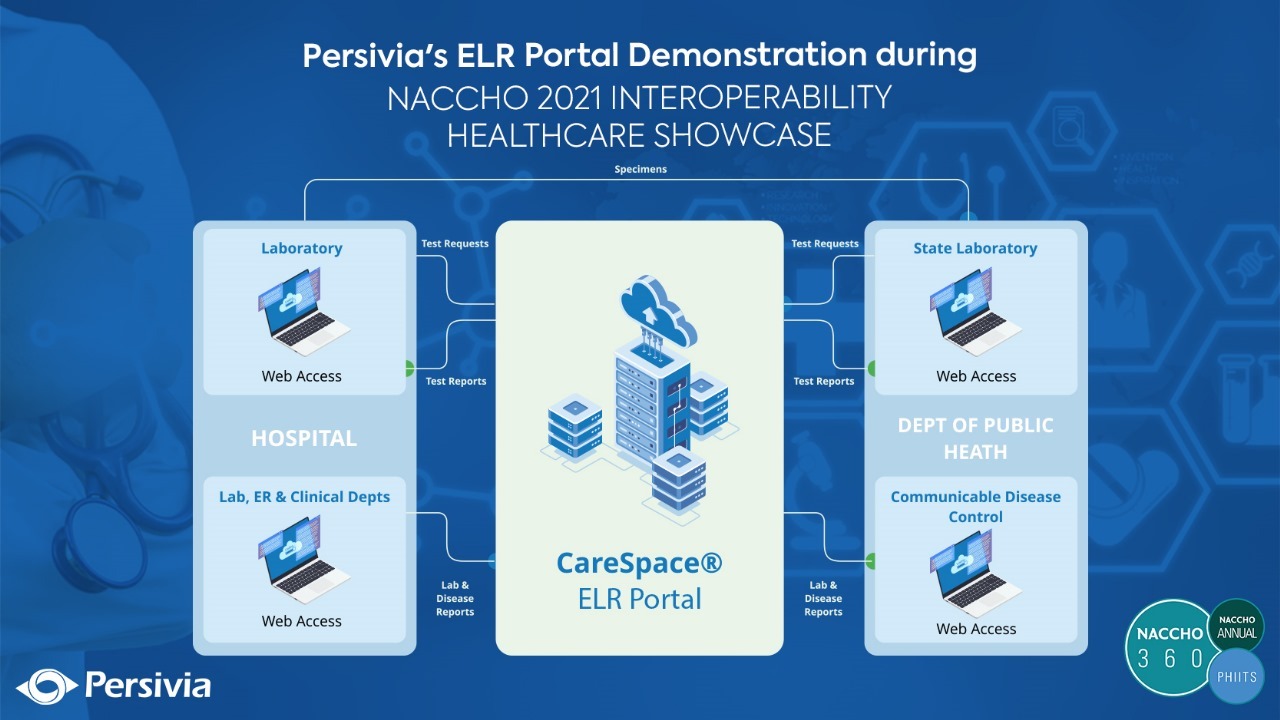Persivia, the leading ELR portal provider to various state health departments, conducted the Interoperability Showcase ELR Demonstration during the Healthcare Information and Management Systems Society (HIMSS) and National Association of County and City Health Officials (NACCHO) 360 virtual conference, from June 29th to July 1st. This year, the NACCHO showcase featured how health information technology systems use standards to support interoperability that enables healthcare providers and public health departments to send, receive, exchange, and use secured electronic health data.
Team Persivia made the most of the virtual conference by demonstrating the highly scalable and robust ELR portal that provides the full bi-directional capability for providers and labs to electronically report to public health, connecting to 1000s of testing sites statewide. Persivia has been leading the way to semantic interoperability since 2005, making it possible for the Iowa Department of Public Health & Massachusetts Department of Public Health to be able to respond to large-scale threats to public health like COVID-19 effectively.
About Persivia
Persivia enables hospitals, practices, payers, public health agencies, and EHR vendors to manage multiple value-based care models across all available datasets to arrive at actionable real-time insights personalized at the point of care with an AI-driven state-of-the-art enterprise platform, CareSpace®
For health systems and providers, CareSpace® helps improve care delivery and quality scores through AI-driven workflows and pathways to create personalized care programs, optimize risk adjustment and beneficiary prioritization at the point of care, both in-person and virtually.
Uniquely for the public health sector, the Persivia platform helps state and local health departments conduct public health surveillance, offering electronic laboratory test orders and results, electronic laboratory reporting, and disease surveillance and reporting. Our team is highly experienced and nimble and can utilize our platform to its full potential for meeting the current and future pandemics’ surveillance requirements, such as the COVID-19 pandemic.
